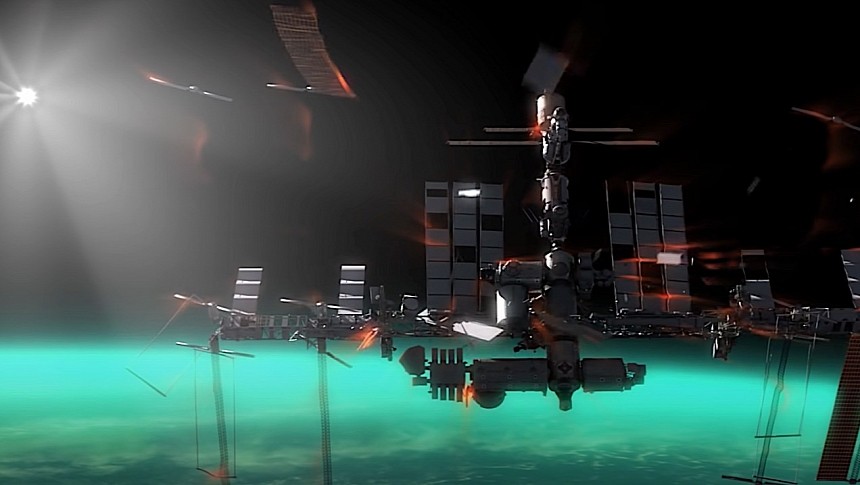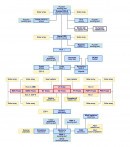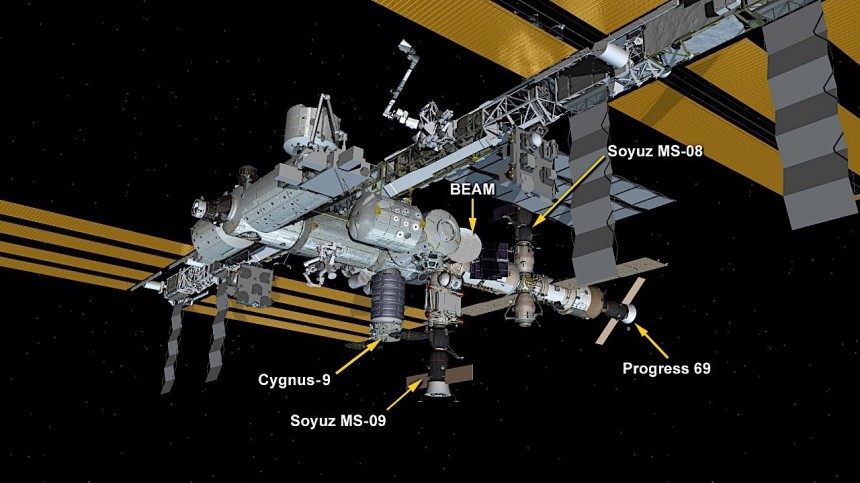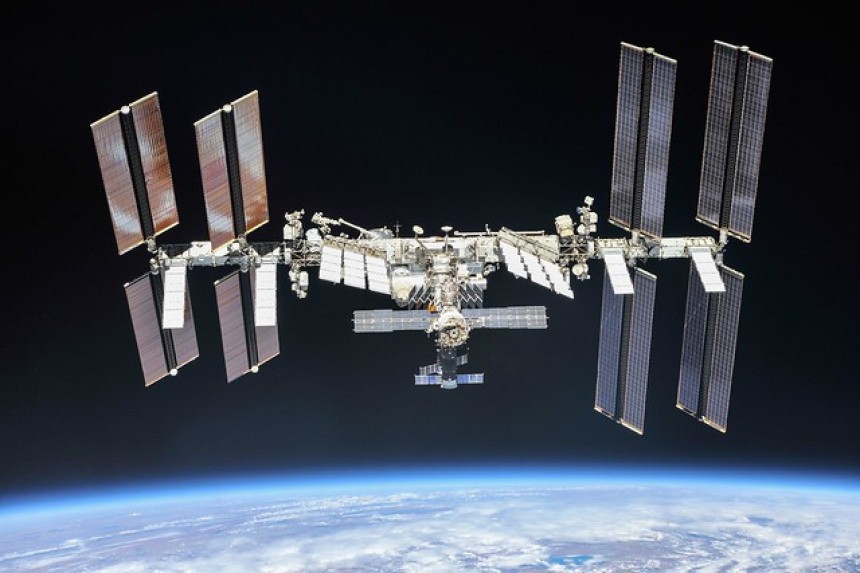The International Space Station (ISS) has been orbiting our planet for more than two decades now. Its story began with the launch of the first component in 1998, and since that time it has been visited by hundreds of humans, both trained astronauts and, in more recent times, even civilians.
The main purpose of the space station is to act as an orbital laboratory where science not possible here on Earth can be performed. Probably thousands of experiments have been performed over the years, in fields as diverse as human imagination can conceive.
Contrary to popular belief, structures built for use in space do not last forever, as even in the absence of gravity and other factors that contribute to structural decay, they are affected by a series of other forces that limit their lifespan.
So, come the next decade the ISS will be brought down, ending an important chapter in the history of human space exploration. But was this the only possible outcome for the laboratory?
NASA seems to have put a lot of thought into it, and the decision was not taken lightly. That's more than obvious from a recently published report called International Space Station Transition Plan, which details the many ins and outs of the ISS, its influence, and what comes next.
A good chunk of the plan is dedicated to why the agency chose the crash-and-burn the station instead of using some other method. This story will give you a closer look into that, with others to follow focusing on other aspects of the plan.
But first, a few things about the station itself. The thing floats in near-Earth orbit, at an altitude of over 400 km (250 miles) from the surface of the planet. It comprises the primary structure (meaning modules, radiators, and truss structures), solar panels, and visiting spacecraft, which attach themselves to various docks placed around the ISS.
Because it repeatedly goes in and out of sunlight, and because of the many dockings that have occurred over the years, the structure has been subjected over the years to extreme dynamic and thermal stresses. Despite the efforts made by the agencies operating the station, the primary structure is now approaching the end of its technical lifetime. That means we'll soon be at a point when no matter the interventions and repairs the station won't be safe to operate.
The above is the main reason why the decision was made by the involved parties – NASA, ESA, CSA, JAXA, and Roscosmos - to put an end to ISS operations at the end of the decade. But that doesn't explain why the choice was made to de-orbit the place in a controlled manner and let it burn in the atmosphere, instead of going for some other approach.
Turns out several other scenarios were tested, but they were all ruled out. Here are the most important such scenarios, but also the reasons why they were rejected.
One of the first things NASA considered was to disassemble the ISS in orbit, and return its component parts to Earth. That would have been the pinnacle of recycling, if you ask me, and something that would have been remembered for ages.
But it would have never worked. First up, none of the components of the ISS were designed to be disassembled.
Even if they were, the size of the structure (it's as big as an American football field) makes that idea economically unsound. It took NASA and its partners 27 spaceflights and 13 years to put it together in orbit, and even if taking it apart could look a lot easier, it's really not, and would require effort and resources no one can afford at this point in time.
The second scenario that was considered was to raise the altitude of the station and place it in something called a graveyard orbit – usually located some 36,000 km (22,000 miles) from Earth. That's something space operators routinely do with small, decommissioned satellites, so it was only natural to be considered.
The problem is, again, the station's size, but this time its mass (430,000 kg or almost one million pounds) and distance to the graveyard orbit play a role as well. It would have been incredibly difficult to push the station there by means of spacecraft (the ISS does not have a sufficiently powerful means of propulsion on its own), so new and expensive pieces of hardware would have needed to be created.
The best space agencies could have hoped for in such a scenario was to push the ISS just enough to extend the amount of time it can spend in near-Earth orbit (currently orbital decay occurs every one to two years, and needs corrective burns) before being pulled down to the surface in an uncontrolled manner.
Scenario number 3 would have called for the station to fall down to Earth in an uncontrollable manner. For what it's worth, this would have been incredibly cheap, as all NASA would have needed to do was let orbital decay take over without correcting it.
That would have also been incredibly dangerous for humans and everything else here on Earth, as no one would have been able to accurately predict when and where the station would fall.
So the current plan for the ISS is simple and straightforward. Bring it down in a controlled manner, in an unpopulated area. It’s an almost zero-risk and few-expenses plan, but one that will see the station be completely destroyed in the process.
Stay tuned next week as we'll explore exactly how the American space agency plans to crash the ISS.
Contrary to popular belief, structures built for use in space do not last forever, as even in the absence of gravity and other factors that contribute to structural decay, they are affected by a series of other forces that limit their lifespan.
So, come the next decade the ISS will be brought down, ending an important chapter in the history of human space exploration. But was this the only possible outcome for the laboratory?
NASA seems to have put a lot of thought into it, and the decision was not taken lightly. That's more than obvious from a recently published report called International Space Station Transition Plan, which details the many ins and outs of the ISS, its influence, and what comes next.
A good chunk of the plan is dedicated to why the agency chose the crash-and-burn the station instead of using some other method. This story will give you a closer look into that, with others to follow focusing on other aspects of the plan.
But first, a few things about the station itself. The thing floats in near-Earth orbit, at an altitude of over 400 km (250 miles) from the surface of the planet. It comprises the primary structure (meaning modules, radiators, and truss structures), solar panels, and visiting spacecraft, which attach themselves to various docks placed around the ISS.
The above is the main reason why the decision was made by the involved parties – NASA, ESA, CSA, JAXA, and Roscosmos - to put an end to ISS operations at the end of the decade. But that doesn't explain why the choice was made to de-orbit the place in a controlled manner and let it burn in the atmosphere, instead of going for some other approach.
Turns out several other scenarios were tested, but they were all ruled out. Here are the most important such scenarios, but also the reasons why they were rejected.
One of the first things NASA considered was to disassemble the ISS in orbit, and return its component parts to Earth. That would have been the pinnacle of recycling, if you ask me, and something that would have been remembered for ages.
But it would have never worked. First up, none of the components of the ISS were designed to be disassembled.
Even if they were, the size of the structure (it's as big as an American football field) makes that idea economically unsound. It took NASA and its partners 27 spaceflights and 13 years to put it together in orbit, and even if taking it apart could look a lot easier, it's really not, and would require effort and resources no one can afford at this point in time.
The problem is, again, the station's size, but this time its mass (430,000 kg or almost one million pounds) and distance to the graveyard orbit play a role as well. It would have been incredibly difficult to push the station there by means of spacecraft (the ISS does not have a sufficiently powerful means of propulsion on its own), so new and expensive pieces of hardware would have needed to be created.
The best space agencies could have hoped for in such a scenario was to push the ISS just enough to extend the amount of time it can spend in near-Earth orbit (currently orbital decay occurs every one to two years, and needs corrective burns) before being pulled down to the surface in an uncontrolled manner.
Scenario number 3 would have called for the station to fall down to Earth in an uncontrollable manner. For what it's worth, this would have been incredibly cheap, as all NASA would have needed to do was let orbital decay take over without correcting it.
That would have also been incredibly dangerous for humans and everything else here on Earth, as no one would have been able to accurately predict when and where the station would fall.
So the current plan for the ISS is simple and straightforward. Bring it down in a controlled manner, in an unpopulated area. It’s an almost zero-risk and few-expenses plan, but one that will see the station be completely destroyed in the process.
Stay tuned next week as we'll explore exactly how the American space agency plans to crash the ISS.














